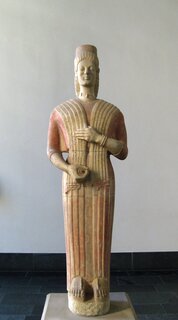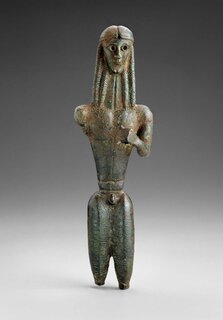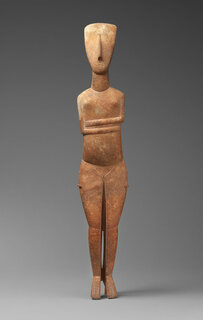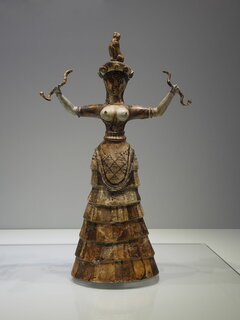
Geographically speaking, many of the Cycladic Islands are rich in mineral resources such as various ores, silver, and marble. It is therefore unsurprising that 'Figure of a Woman' is comprised of marble. The Cycladic people were sea faring, and items have been found on shipwrecks, which indicate trade with Egypt and the Near East. As Richard Neer points out in their book Greek Art and Archaeology, this provides further plausibility that these statuettes may have been influenced by the Near East, “where similar types have been found going back to the 4th millennium.” Cycladic sculptures were comprised primarily of female figures that varied from rudimentary sculptures to precise and proportionate figures. The striking yet simple statuettes display Early Cycladic notions of harmony of parts, as well as proportionality. Most notably, the proportions of Figure of a Woman were carefully planned out with a compass, reinforcing the idea of symmetry. Upon further analysis it has been shown that the figurines were originally painted. As Neer points out, “Their seeming abstraction is deceptive, for they were once gaudily painted. Although the colors have faded or worn away with time, enough traces survive to demonstrate the facial features, jewelry, hair, even tattoos would have enlivened the figures in their original state.” Despite their popularity and production for some 500 years, the functions of the figures are unknown. Neer suggest that, “they came from both settlements and graves, but looting has made it impossible to draw definite conclusions”




